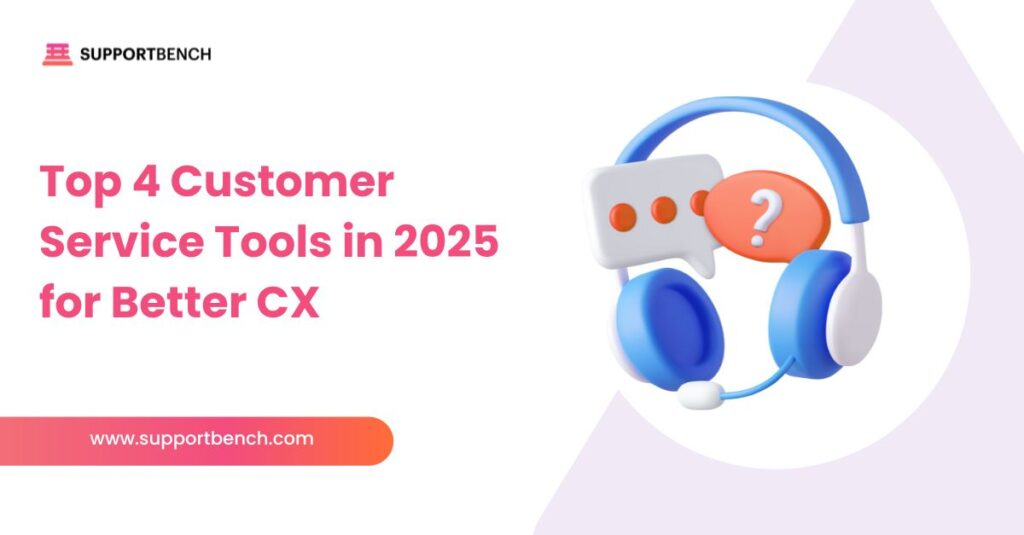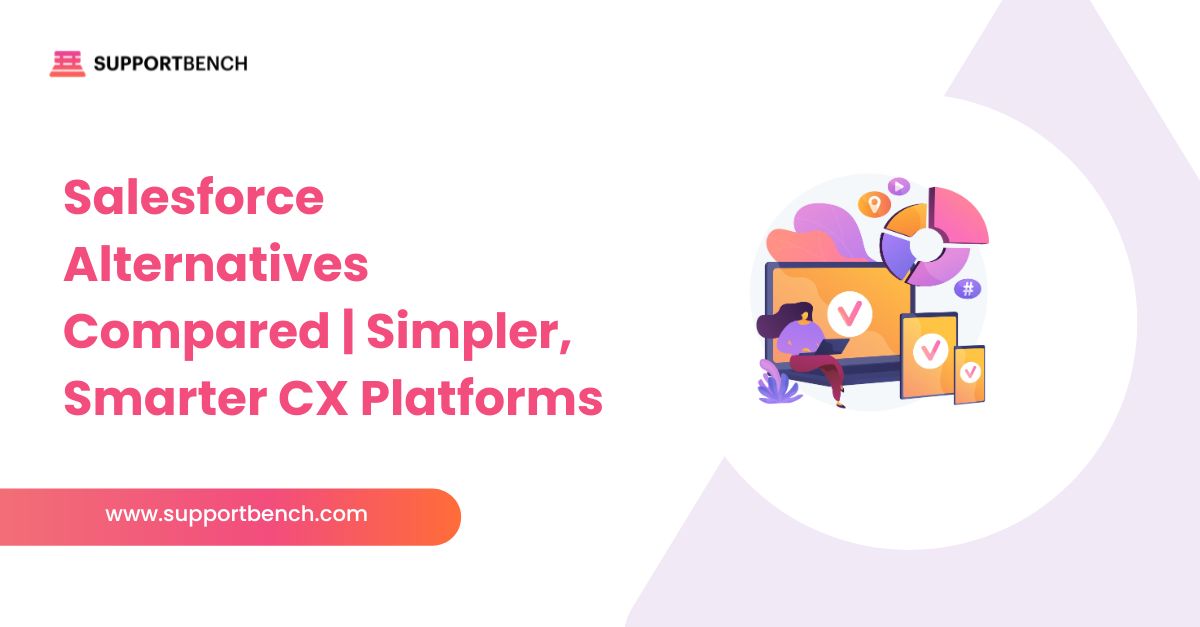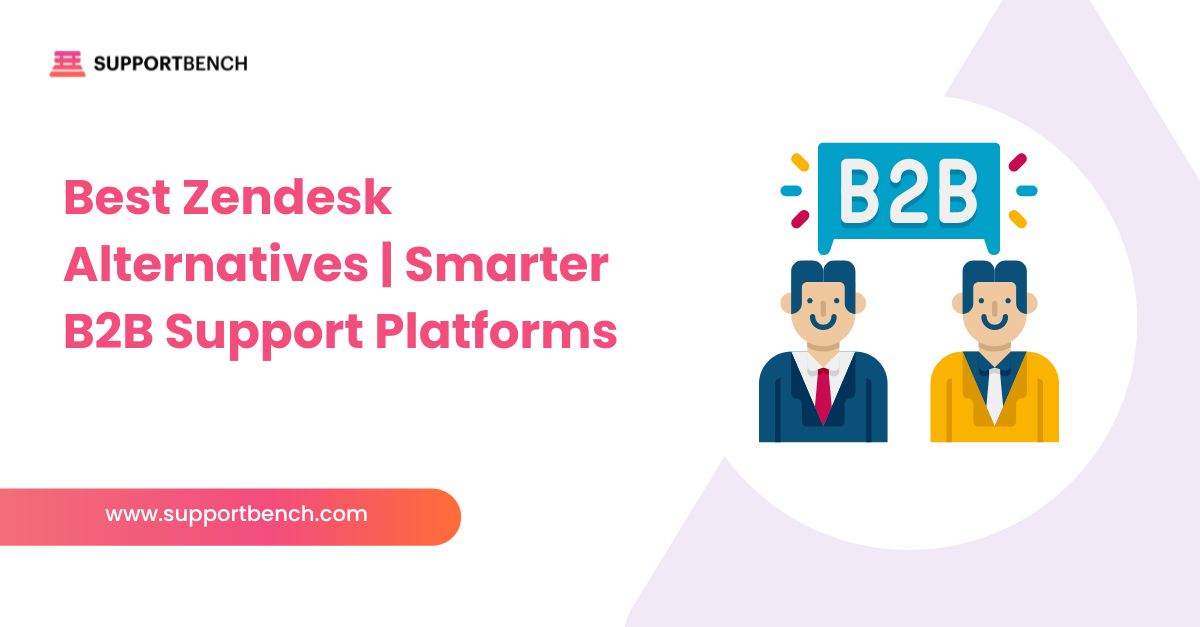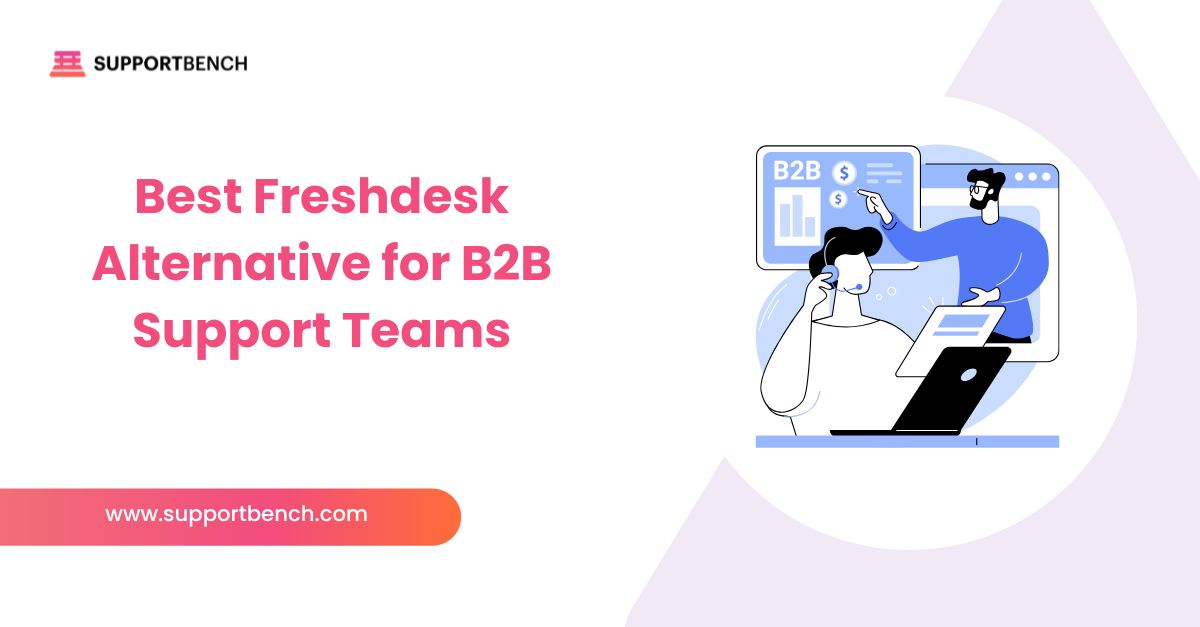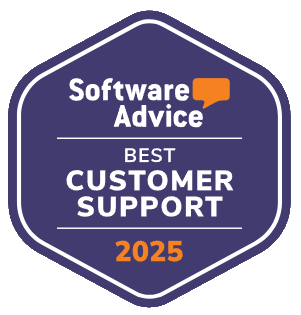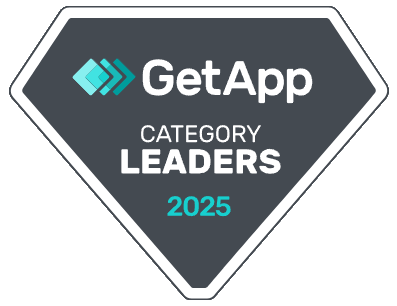Customer expectations have changed. People want replies without long delays, the same level of service across every channel, and conversations that feel personal even when handled by large teams. Meeting those standards is difficult without dependable customer service software.
These systems keep requests organized, help staff manage their workload, and give managers a clear view of satisfaction levels. In 2025, service platforms will go far beyond simple ticketing systems.
They integrate with CRM software, include automation that reduces repetitive work, and allow teams to handle conversations across email, chat, phone, and social channels in one place.
The four leading options—SupportBench, Zendesk, Freshdesk, and Help Scout—offer different strengths. If you’re deciding specifically between the first three, our Zendesk vs Freshdesk vs Supportbench comparison guide provides a deeper look at pricing, scalability, and AI capabilities.
At a Glance:
Customer service software helps businesses handle requests efficiently, respond faster, and raise satisfaction. In 2025, the most important features are multichannel support, AI tools, sentiment analysis, CRM integration, and security.
The leading platforms are Supportbench, best for scaling and enterprise operations; Zendesk, known for integrations; Freshdesk, an affordable option with AI chatbots; and HelpScout, a simple choice for smaller teams.
Why Customer Service Software Matters

The quality of customer service has a significant impact on retention, reputation, and overall growth. The right software helps companies keep customers, reduce costs, and provide a reliable service experience.
Support software ensures that every request is tracked and followed up on. Reducing missed tickets helps companies keep existing customers satisfied, which is usually less expensive than acquiring new ones.
Delays often lead to complaints or negative reviews. Tools that centralize messages from different channels enable teams to respond more quickly while maintaining a consistent tone and service.
Reports and dashboards highlight recurring issues, response times, and satisfaction levels. Managers can then make adjustments based on facts, not assumptions.
Key Features to Look for in Customer Service Software
When selecting a platform, businesses should prioritize features that directly support customer experience and operational requirements. Key areas include:
- Response Time Management: Prioritizes urgent tickets and helps meet service-level agreements.
- Multichannel Support: Brings email, chat, phone, and social conversations into a single workspace.
- Ticketing & Workflow Automation: Assigns requests, sets priorities, and handles routine steps automatically.
- AI Capabilities: Includes chatbots, predictive suggestions, and automated replies for faster service.
- Sentiment Analysis: Identifies customer frustration or satisfaction levels during interactions.
- CRM Integration: Combines support with customer records for a full view of accounts.
- Scalability and Security: Supports higher volumes as a business grows and protects sensitive data.
Top Customer Service Software for 2025
Here are four customer service platforms leading the way in 2025, each with features designed to address changing business needs:
Supportbench
Supportbench is a full-service platform that combines ticketing, automation, and analytics. It connects with CRM tools and adapts well for companies of all sizes.
Best Use Cases
High-volume industries such as distribution, retail, and technology services.
Strengths
- Custom SLAs for reliable response times
- AI-driven insights for predicting needs
- Omnichannel communication across email and chat
- Knowledge base following KCS standards
- Customer health scoring
- Secure and scalable infrastructure
Weaknesses
Initial training may be needed for small teams.
Ideal Business Size
Best for medium to large businesses, but scalable for growing smaller teams.
Industry Use Case
Wolseley Canada, a leading distributor of plumbing and heating products, faced challenges in managing high volumes of customer emails, which impacted customer satisfaction. By implementing Supportbench, Wolseley transformed its support operations.
The platform’s intuitive features allowed agents to handle thousands of emails daily, improving efficiency and customer satisfaction significantly.
Zendesk
Zendesk is known for its simple interface and wide range of integrations, making it popular across many industries.
Best Use Cases
E-commerce and retail businesses are managing large volumes of customer requests.
Strengths
- Strong multichannel support
- AI features such as Answer Bot
- Flexible workflows
- Performance analytics and dashboards
- Marketplace with extensive integrations
Weaknesses
Costs increase quickly with add-ons.
Industry Use Case
E-commerce companies rely on Zendesk to handle high volumes of customer inquiries, ensuring prompt and efficient support across multiple channels.
Ideal Business Size
Mid-sized to large organizations with complex support needs.
Freshdesk
Freshdesk is an all-in-one platform that combines multichannel support with AI chatbots and detailed analytics.
Best Use Cases
Healthcare and service industries that require organized scheduling and support for patients or clients.
Strengths
- AI chatbot “Freddy” handles routine requests
- Ticketing system for tracking and resolution
- Team collaboration features
- Customisable dashboards
- Affordable compared to some competitors
Weaknesses
Advanced AI tools require higher-tier plans.
Industry Use Case
A healthcare provider used Freshdesk to manage patient inquiries and streamline appointment scheduling, improving operational efficiency and patient satisfaction.
Ideal Business Size
Small to mid-sized businesses seeking flexibility at a lower cost.
HelpScout
HelpScout focuses on email-based support with a shared inbox and simple collaboration features.
Best Use Cases
Non-profits and small teams that value straightforward communication tools.
Strengths
- Easy-to-use shared inbox
- Knowledge base and self-service portal
- Beacon tool for in-app messaging
- Automated workflows for repetitive tasks
- Customer history tracking
Weaknesses
Limited automation and analytics compared with larger platforms.
Industry Use Case
Non-profits benefit from HelpScout’s user-friendly tools, making it easier to manage donor and volunteer communications while maintaining a focus on mission-driven goals.
Ideal Business Size
Best suited for small organizations and non-profits.
You Might Also Like:
- Ai tools for Summarizing and Categorizing Email Tickets
- Best Omnichannel Communication Tools 2025
- Best B2B Customer Support Platforms
- Customer Service Training Books
Trends in Customer Service Software for 2025
The latest tools reflect new customer habits and business priorities. Important trends include:
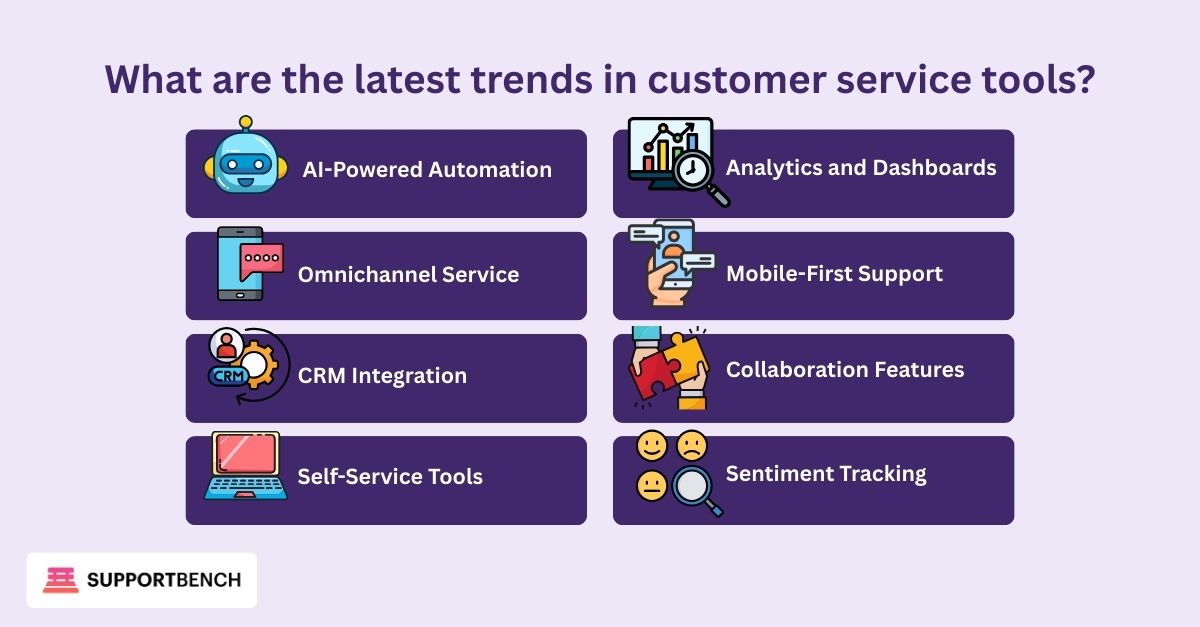
AI-Powered Automation
Chatbots and predictive analytics handle routine requests. Example: Freshdesk’s Freddy bot automates responses.
Omnichannel Service
Platforms bring email, chat, phone, and social into a single workspace for consistency. Example: Zendesk centralizes e-commerce support seamlessly across channels.
CRM Integration
Customer service tools are linked directly to CRM records, providing context and a complete history. Example: Supportbench syncs tickets to CRM for personalized interactions.
Self-Service Tools
FAQs and knowledge portals reduce agent workload while giving customers instant answers. Example: HelpScout’s knowledge base improves self-service adoption.
Analytics and Dashboards
Live dashboards highlight performance, bottlenecks, and satisfaction trends for smarter decisions. Example: Supportbench reports guide managers in refining processes.
Mobile-First Support
Interfaces designed for smartphones enable agents and customers to manage tickets from anywhere. Example: Freshdesk’s mobile app supports healthcare and field teams.
Collaboration Features
Internal notes and shared inboxes improve teamwork and reduce duplicate replies. Example: HelpScout’s shared inbox and Beacon tool help small teams coordinate responses smoothly.
Sentiment Tracking
AI reviews tone in conversations to catch frustration early. Example: Supportbench’s customer health scoring utilizes sentiment data to identify accounts that require closer attention.
Conclusion
Customer service software is now at the heart of how businesses build and maintain relationships. Selecting the right customer service software is crucial for achieving exceptional customer satisfaction and operational efficiency.
Tools like Supportbench, Zendesk, Freshdesk, and HelpScout provide innovative features and integrations tailored to diverse business requirements. By adopting these solutions, businesses can elevate their customer service capabilities and stay competitive in 2025.
Ready to transform your customer service experience? Book a demo to explore Supportbench’s advanced features to boost satisfaction, streamline operations, and drive success.


